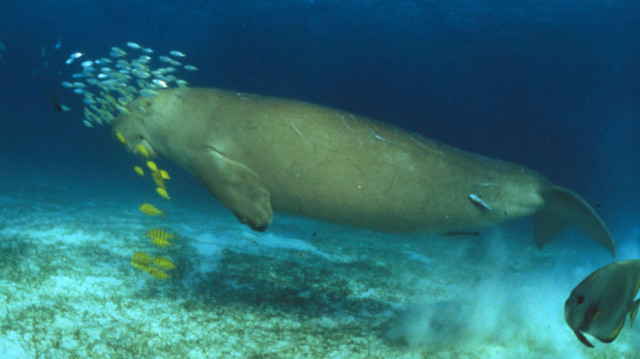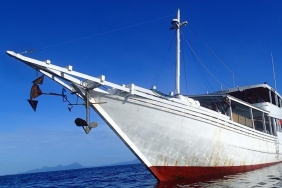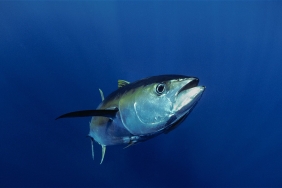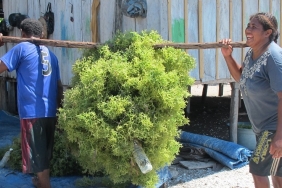THREATS FROM TOURISM ACTIVITIES STILL OVERSHADOW THE LIVES OF DUGONGS IN ALOR
By: Juraij, Dwi Suprapti, Sheyka N. Fadela - Marine Species Conservation Team
Maritime tourism activities are one of the major threats to the conservation of dugongs (Dugong dugon) in the waters of Alor Regency, East Nusa Tenggara, according to a recent study conducted by WWF-Indonesia in June 2016. Besides involving direct visual and aerial observations, the study also included conducting questionnaire surveys in two locations in Alor Regency where dugongs are found.
The appearance of dugongs in Alor waters is actually not new to many people. However, in recent years it is known that many tourists have begun to come to Alor to do diving and snorkeling activities. Direct interaction between tourists and dugongs is increasingly difficult to avoid, considering that there are still no strict regulations related to tourism activities in the two regions.
In addition to its natural scenery that attracts many tourists, Alor's waters are also famous for its seagrass beds. It is not surprising that the majority of dugong encounters occur in Alor waters, which are also areas with higher cover and density (almost 70%) of seagrass species Halophila ovalis. Of the 35 marine mammal species that can be found in Indonesian waters, dugongs are the only ones that have strong associations with seagrass ecosystems as their feeding ground. Among the seven seagrass species found in the study site, H. ovalis is known to be a favorite food of dugongs.
Since WWF-Indonesia's study in 2011, tourism activities have been predicted to be one of the threats to dugong conservation in Alor waters. Human interaction with this slow reproducing animal becomes even more alarming when seeing the amount of media exposure promoting Alor Regency as one of the tourist destinations in Indonesia. The threat that comes from irresponsible tourism activities is again evidenced in WWF-Indonesia's latest study, where the questionnaire survey shows the lack of awareness of the majority of respondents about dugongs and the rampant tourism activities in Alor waters that are not in accordance with the principles of responsible tourism. Specifically for Alor waters, there has not been seen any potential threats from fisheries activities, mainly as bycatch (bycatch), and threats from hunting for the utilization of meat and other body parts.
Responsibly run tourism activities are important to encourage in Alor's waters, which will not only protect the animals, but also bring benefits to the people who receive tourists. Conversely, unregulated direct interaction between dugongs and tourists can pose risks to both dugongs and tourists. For example, increased exposure to zoonoses or diseases that can be transmitted from animals to humans and vice versa.
Documentation of dugongs in Alor waters was carried out for the first time in collaboration between WWF-Indonesia and the Alor Regency Marine and Fisheries Office and various members of the Alor regional marine protected area (MPA) management team. Although documentation was only carried out on one dugong, at that time it was already known that there were three individual dugongs in Alor waters. Unfortunately, it is still inconclusive whether the individual dugong observed in 2011 is the same individual observed during the latest study by WWF-Indonesia in 2016.





